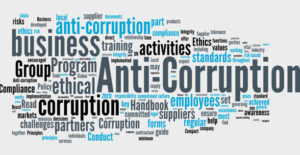Prevention of Child Labor: Education has the Major Role to Play

Education is one of the most powerful tools in the fight against child labor. By providing children with knowledge, skills, and opportunities, education offers a pathway out of poverty and away from the dangers of child labor. Despite the clear benefits of education, millions of children around the world are still deprived of this fundamental right, often because they are forced to work instead of attending school. This blog explores the critical role of education in preventing child labor, the barriers that prevent children from accessing education, and the initiatives that are making a difference.
The Impact of Education on Child Labor
1. Providing Alternatives to Work: Education offers children a viable alternative to work by giving them the knowledge and skills they need to pursue better opportunities in the future. When children are enrolled in school, they are less likely to be forced into labor, as education provides them with a safe environment where they can learn and grow. Additionally, education opens doors to higher-paying jobs and career paths, reducing the economic incentives for child labor.
2. Breaking the Cycle of Poverty: Poverty is one of the primary drivers of child labor, and education is a key factor in breaking this cycle. Educated individuals are more likely to secure stable and well-paying jobs, which can lift entire families out of poverty. By investing in education, societies can reduce the economic pressures that lead to child labor and create a more prosperous and equitable future for all.
3. Empowering Children and Communities: Education empowers children by giving them the tools they need to make informed decisions about their lives and futures. It also empowers communities by raising awareness of the dangers of child labor and the importance of education. When communities value education and understand its benefits, they are more likely to prioritize schooling for their children over work.
4. Raising Awareness and Changing Attitudes: Schools are critical platforms for raising awareness about child labor and changing societal attitudes toward it. Through education, children, parents, and community members can learn about the rights of children and the risks associated with child labor. This shift in attitudes is essential for reducing the acceptance of child labor and promoting the value of education.
Barriers to Education for Vulnerable Children
1. Lack of Access to Schools: In many parts of the world, children face significant barriers to accessing education. Rural and remote areas often lack schools, making it difficult for children to attend. Even when schools are available, they may be under-resourced, poorly staffed, or located far from home, making attendance challenging for many children.
2. Economic Barriers: For families living in poverty, the cost of education can be a significant barrier. School fees, uniforms, books, and other expenses can be prohibitively expensive, forcing parents to choose between sending their children to school and meeting basic needs. As a result, many children are pulled out of school and sent to work to help support their families.
3. Cultural and Social Norms: In some cultures, education, particularly for girls, is not prioritized. Traditional gender roles, early marriage, and other cultural practices can prevent children from attending school. Additionally, in some communities, child labor is seen as a normal part of life, and the value of education is not fully recognized.
4. Conflict and Displacement: Conflict and displacement are significant barriers to education in many parts of the world. Wars, natural disasters, and other crises can destroy schools, displace families, and disrupt children’s education. In conflict-affected areas, children are often forced into labor to survive, and education becomes an unattainable dream.
Initiatives to Promote Education and Combat Child Labor
1. Free and Compulsory Education: Implementing laws that make education free and compulsory for all children is a critical step in preventing child labor. By removing financial barriers and ensuring that all children have access to schooling, these laws help keep children in school and out of the labor force.
2. Conditional Cash Transfer Programs: Conditional cash transfer programs, such as those in Brazil and Mexico, provide financial incentives to families who keep their children in school. These programs have been successful in reducing child labor by alleviating the economic burden of education and encouraging families to prioritize schooling over work.
3. School Feeding Programs: School feeding programs have been effective in increasing school attendance and reducing child labor. By providing meals at school, these programs address both hunger and education, making it more likely that children will attend school rather than work.
4. Community-Based Education Programs: In areas where formal schools are not available, community-based education programs can provide children with access to learning opportunities. These programs offer flexible learning schedules that accommodate the needs of working children and help them transition from labor to full-time education.
Conclusion
Education is a crucial tool in the fight against child labor, offering children the chance to escape the cycle of poverty and build better futures. However, significant barriers remain in ensuring that all children have access to quality education, particularly in areas affected by poverty, conflict, and cultural norms that devalue schooling. By addressing these barriers and implementing effective educational initiatives, we can reduce the prevalence of child labor and create a brighter future for children around the world. The fight against child labor is not just about protecting children from exploitation but also about giving them the opportunity to thrive through education.










